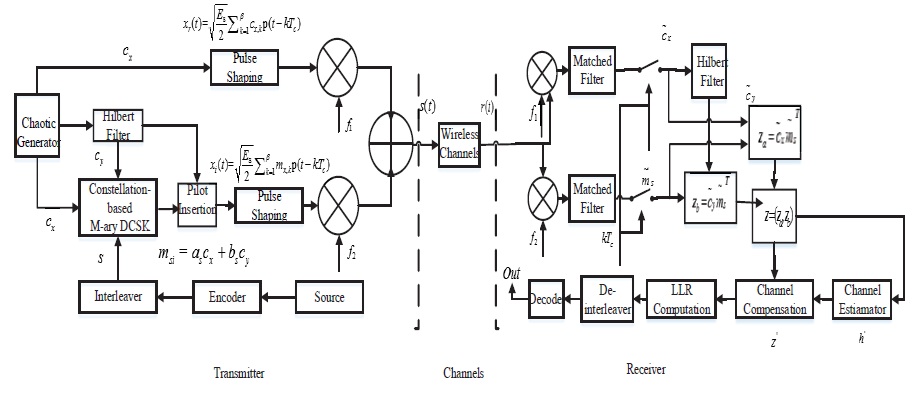- ALL COMPUTER, ELECTRONICS AND MECHANICAL COURSES AVAILABLE…. PROJECT GUIDANCE SINCE 2004. FOR FURTHER DETAILS CALL 9443117328


Projects > ELECTRONICS > 2017 > IEEE > COMMUNICATION
In this paper, a novel differential chaotic bit interleaved coded modulation (DC-BICM) system is proposed for band-limited transmission. This system combines protograph-based low density parity check (P-LDPC) codes with constellation-based M-ary differential chaos shift keying (DCSK) modulation by one bit-wise interleaving. BER simulation results show that the system has higher coding gain compared to constellation-based M-ary DCSK modulation system with the same spectral efficiency over multipath Rayleigh fading channels. At the same time, several simulations and P-EXIT analysis are used to analyze the performance of the proposed system. it is found that there is a big room for optimization of the system by comparing decoding thresholds and simulation results. Moreover, the system with only partial channel state information (CSI) has better performance, and lower complexity compared with the traditional bit-interleaved coded modulation (BICM) direct sequence- spread-spectrum (DS/SS) system. As a result, the DCBICM system is a good candidate for band-limited transmission.
Orthogonal Multi-Level Differential Chaos Shift Keying Modulation Scheme, Quadrature Chaos-Shift Keying.
In this paper, the DC-BICM system is designed. The BER curves demonstrate that the proposed system has higher coding gains compared with the squared-constellation-based M-ary DCSK system with the same spectral efficiency over three-path fading channel, from which it can be concluded that the system has high spectral efficiency and strong ability to resist multipath interference. There exist best spreading factor and best decoding iterations for the system performance according to the simulation results, and the performance gets better with the increasing code length, but, getting worse with increasing M. Also, the gap between simulation results and decoding thresholds signifies that there is a large room for optimization of the system. The comparison between the proposed system and the traditional BICM-DS/SS system over multipath fading channels shows that the proposed system has better performance with partial CSI, which indicates that the proposed system has stronger robustness.
BLOCK DIAGRAM
